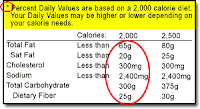· Use smaller plates and bowls. This trick actually fools your mind into thinking that you're getting more food. When you see a plate (no matter what size) brimming with food, you're already thinking, I am going to be satisfied after this meal! Smaller plates mean that your portion sizes will be smaller and you'll eat less food.
· Eat your meal slowly. It takes about 20 minutes for your brain to get the message that you have eaten enough and to then communicate that feeling of satisfaction (or fullness!) to your stomach. Put your fork or spoon down between bites of food, talk with others at the table, chew your food thoroughly, and drink liquids during meals to slow your rate of eating.
· Drink plenty of non-calorie beverages each day. Interestingly, the feeling of thirst can sometimes impersonate that of hunger, so make sure you are drinking enough fluids every day.
· Change your eating schedule, or create one that works. Skipping or delaying meals can result in overeating. If you skip meals often, try to eat on more of a schedule. You will then feel more satisfied with what you do eat.
· Enjoy your food. Take the time at meals to simply enjoy what you are eating. Taking pleasure in what you eat will help you feel more satisfied.
The Dietary Guidelines for Americans recommend that you also:
· eat more and different kinds of vegetables (and the more colors the better)
· choose more calcium-rich foods like low-fat cheeses, milk, and yogurt
· make sure that at least half of your grains are whole grains
· choose lean sources of protein such as fish, chicken, low-fat beef, soy, and legumes.
· cook the low-fat way by grilling, baking, and broiling
· limit fat, salt, and sugars by reading food labels
To protect your health in the coming year, think about your day-to-day food choices and aim for a super diet. Start reading food labels so you'll become more aware of what you're putting into your body. Plan for healthier snack choices at work. Stop adding salt to foods. Eat nothing after 8 p.m. With these simple changes in lifestyle we can achieve our goal of healthy eating effectively.
source: http://www.webmd.com/diet/control-portion-size?page=2 ; http://www.healthstatus.com/calculate/cbc





.jpg)
